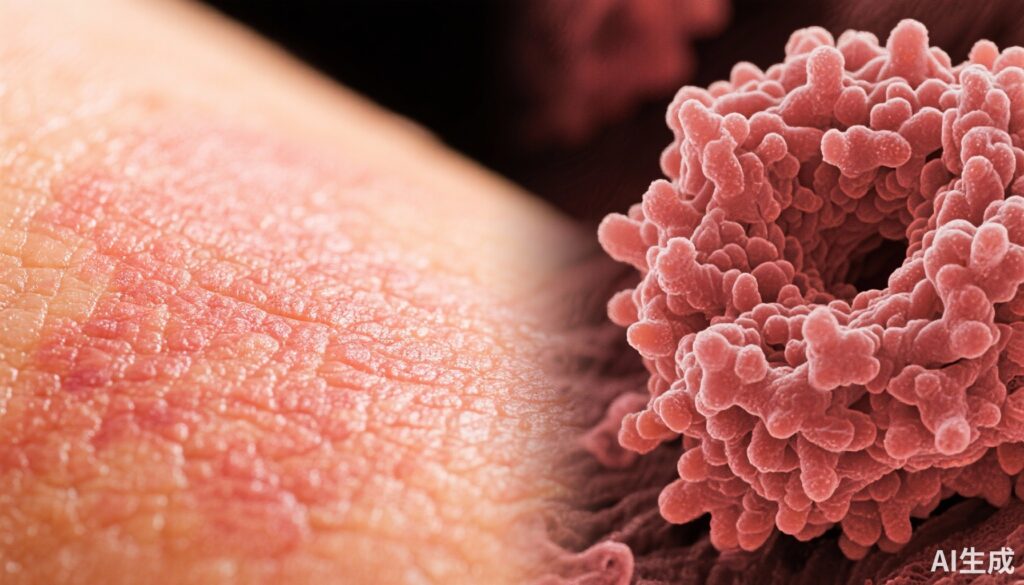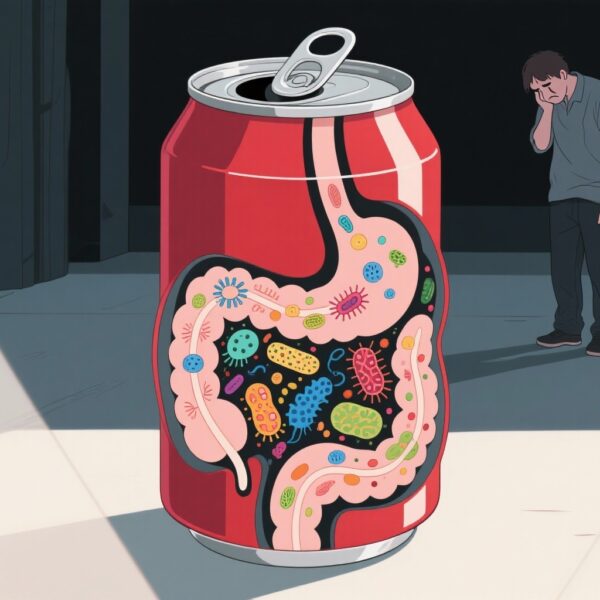Highlight
– Painful, blistering, and severe sunburns are significantly associated with increased odds of developing cutaneous squamous cell carcinoma (cSCC).
– High frequencies of such sunburns during childhood show the strongest association with cSCC risk.
– The meta-analysis synthesized data from 17 studies comprising over 321,000 participants worldwide.
– These findings reinforce the necessity of early and sustained sun protection to prevent cSCC development.
Study Background and Disease Burden
Cutaneous squamous cell carcinoma (cSCC) is the second most common form of skin cancer after basal cell carcinoma, accounting for substantial morbidity worldwide. Ultraviolet (UV) radiation from sunlight is a well-established carcinogen in skin carcinogenesis. While chronic sun exposure contributes to cSCC risk, the precise role of acute UV damage, manifested as sunburns, remains less clearly defined. Sunburn represents an inflammatory skin response with DNA damage that can trigger carcinogenic mutations. This uncertainty about sunburn’s specific contribution to cSCC risk creates challenges in refining preventive public health messaging and clinical risk assessment.
Study Design
This meta-analysis conducted a comprehensive literature search of Embase, PubMed, and the Cochrane Library (CENTRAL) from inception until May 6, 2025, without restrictions on language or publication date. Search terms combined variations of nonmelanoma skin cancer (NMSC), squamous cell carcinoma, Bowen disease, and individual terms related to sunburn, sun exposure, sunlight, sun damage, and ultraviolet radiation.
Eligible studies were analytical investigations within the general population that examined associations between any history of sunburn at any age and risk of developing cSCC. Three independent, masked reviewers initially screened 9,310 titles and abstracts, narrowing the pool to 279 for full-text review. Ultimately, 43 articles met eligibility criteria, and among these, 17 studies with 321,473 participants provided data suitable for quantitative synthesis.
Data extraction followed the Meta-analysis of Observational Studies in Epidemiology (MOOSE) guidelines. Two independent reviewers extracted and cross-verified relevant data. Pooled odds ratios (ORs) and 95% confidence intervals (CIs) were calculated using the DerSimonian-Laird random-effects model to account for study heterogeneity.
Main Outcome and Measures
The primary outcome was development of cutaneous squamous cell carcinoma. Sunburn frequency was categorized for analysis into ordinal variables—none, low, medium, and high—across any life period, including childhood. Analysis focused specifically on painful, blistering, and/or severe sunburns as these represent more intense acute UV damage.
Adjusted measures of association were prioritized where available; otherwise, unadjusted data were used. Data were standardized to odds ratios to enable pooled effect estimation with highest clinical relevance.
Key Findings
The meta-analysis revealed a dose-response relationship between frequency of painful, blistering, and severe sunburns over a lifetime and increased odds of cSCC. Specifically, individuals with medium frequency of such sunburns had a 51% increased odds (OR, 1.51; 95% CI, 1.26-1.81), while those with high frequency had a 69% increased odds (OR, 1.69; 95% CI, 1.39-2.06) compared to those without such sunburns.
Notably, the association was stronger when sunburns occurred during childhood. High frequency of painful blistering sunburns in childhood conferred more than a threefold increased odds of cSCC development (OR, 3.11; 95% CI, 1.26-7.66).
Overall, any history of painful, blistering, and/or severe sunburn was associated with a 38% increase in the odds of developing cSCC (OR, 1.38; 95% CI, 1.06-1.79).
These findings held true across various adjusted analyses that accounted for potential confounders such as age, sex, skin type, geographic location, and cumulative sun exposure, supporting the robustness of the association.
Expert Commentary
This meta-analysis adds critical quantitative clarity to the relationship between acute UV skin injury and cSCC risk. The dose-dependent association of painful, blistering sunburns, particularly in early life, aligns with biological understanding that intense UV exposure causes DNA photoproducts leading to mutagenesis in keratinocytes.
However, observational studies inherently carry potential residual confounding and recall bias, especially regarding sunburn history self-reporting. Differences in definitions of sunburn severity and sun exposure patterns across geographically diverse populations may influence generalizability.
From a mechanistic perspective, sunburn represents acute epidermal inflammation and oxidative DNA damage that may overwhelm repair mechanisms, potentiating mutagenic events critical in cSCC pathogenesis. The enhanced risk from childhood sunburn suggests a vulnerable window where emerging skin tissue may be more susceptible to permanent UV damage.
Current guidelines advocate sun protection to prevent all forms of skin cancer, but this analysis reinforces the importance of preventing severe sunburn episodes, especially during childhood, as a focused strategy to mitigate cSCC risk.
Conclusion
This comprehensive meta-analysis provides compelling evidence that a history of painful, blistering, and severe sunburns significantly elevates the risk of cutaneous squamous cell carcinoma, with the strongest risk observed for childhood sunburns. These findings underscore the critical need for intensified sun safety education and protective interventions from early life stages to prevent the burden of cSCC. Future research should aim to dissect the interplay between sunburn severity, genetic susceptibility, and cumulative UV exposure to refine personalized prevention approaches.
References
Weber I, Liao K, Dang T, Shah M, Wehner MR. Sunburn and Cutaneous Squamous Cell Carcinoma: A Meta-Analysis. JAMA Dermatol. 2025 Sep 24:e253473. doi: 10.1001/jamadermatol.2025.3473. Epub ahead of print. PMID: 40991277; PMCID: PMC12461597.
Gloster HM Jr, Neal K. Skin cancer in skin of color. J Am Acad Dermatol. 2006;55(5):741-760.
Narayanan DL, Saladi RN, Fox JL. Ultraviolet radiation and skin cancer. Int J Dermatol. 2010;49(9):978-986.
Wu S, Han J, Laden F, Qureshi AA. Long-term ultraviolet flux, other potential risk factors, and skin cancer risk: a cohort study. Cancer Epidemiol Biomarkers Prev. 2014;23(6):1080-1089.



